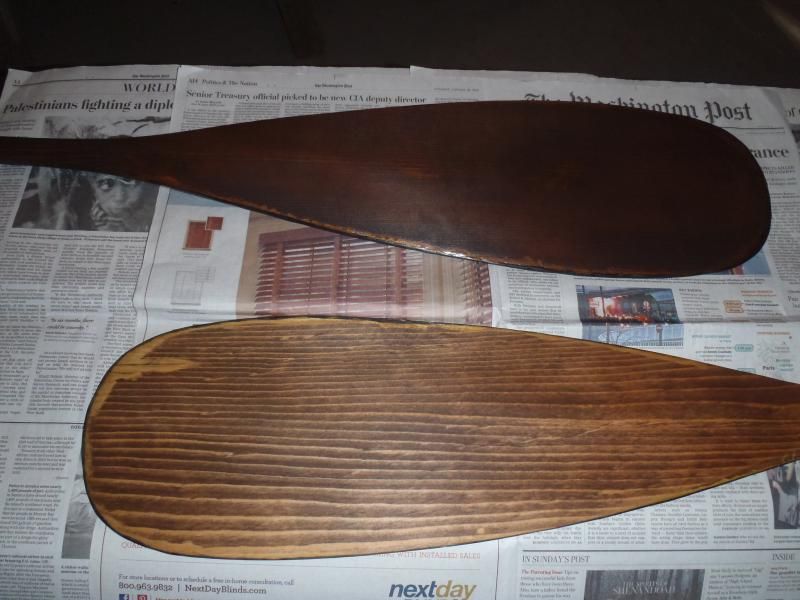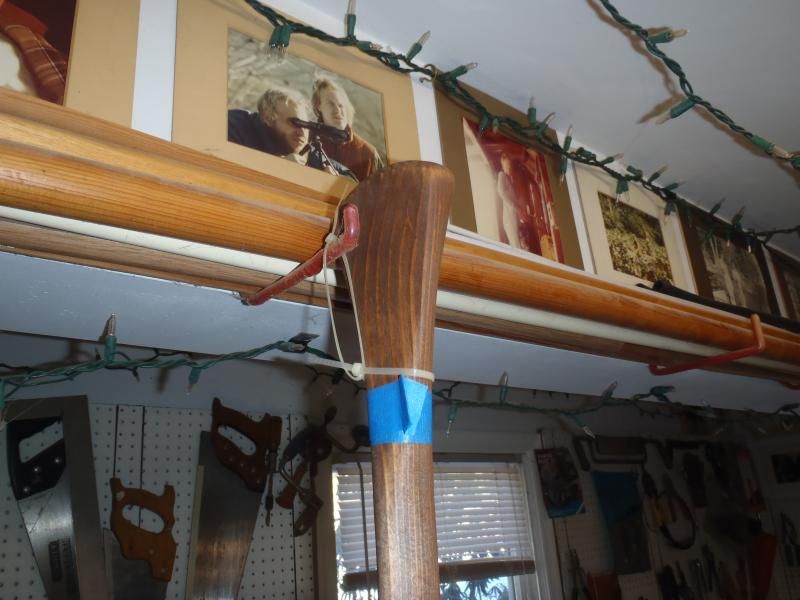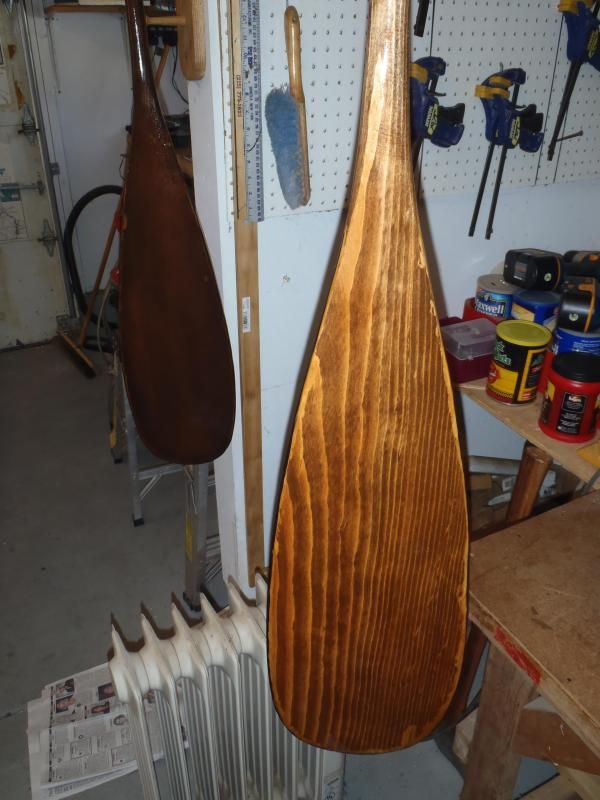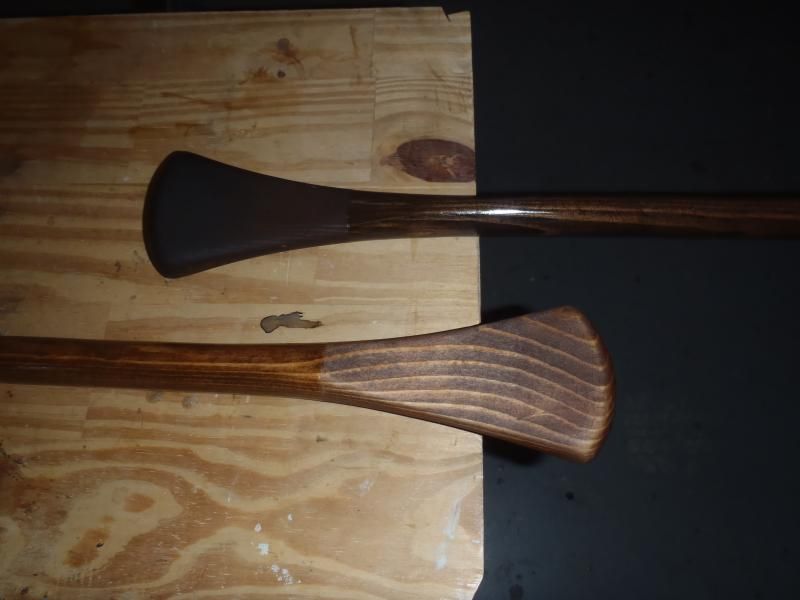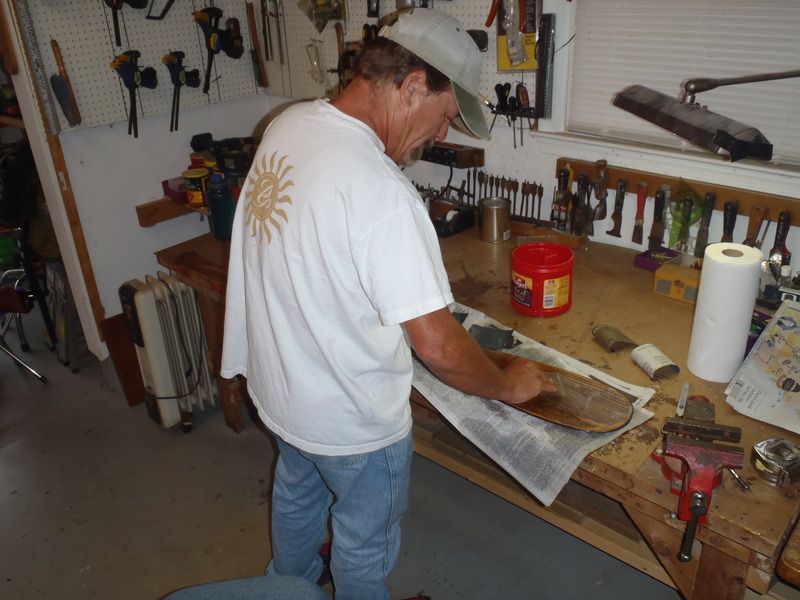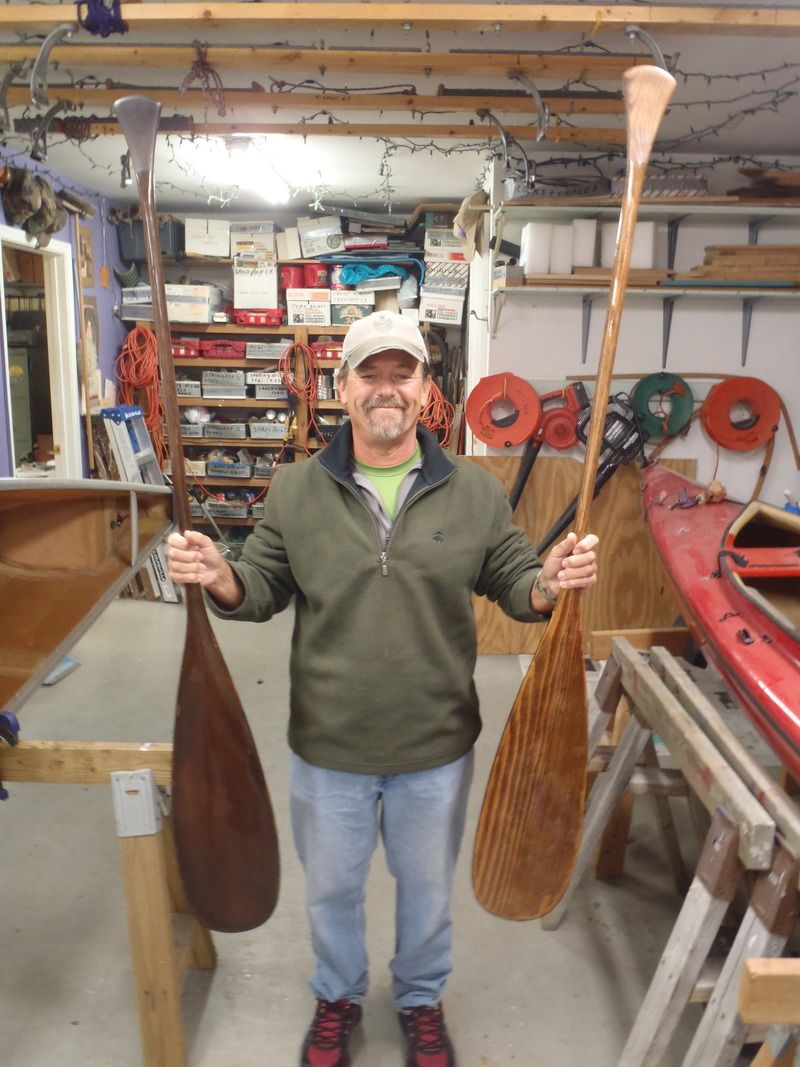G
Guest
Guest
Shop partner Joel brought up two more family-historic paddles from the camp, 40+ year old Old Towns. These are paddles number 4 and 5 from his family camp. We refurbished three last year; stripped to bare wood, nicks and chips repaired, and sanded baby butt smooth with carbon fiber tow epoxied onto the blade edges. Re-varnished (except the grips, which were oiled).
Joel’s brothers immediately declared those four memory sticks to be family heirlooms, so the last two need to be at least as fine.
Per our usual shop strategy I did nothing except hand Joel the tools he needed and put away what he was done with.
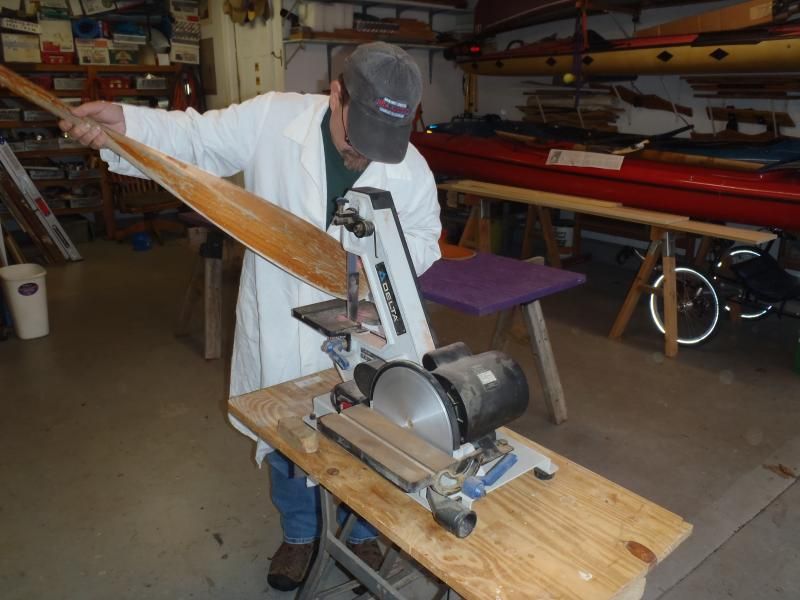
Sometimes my eyes go funny when Joel is making dust.
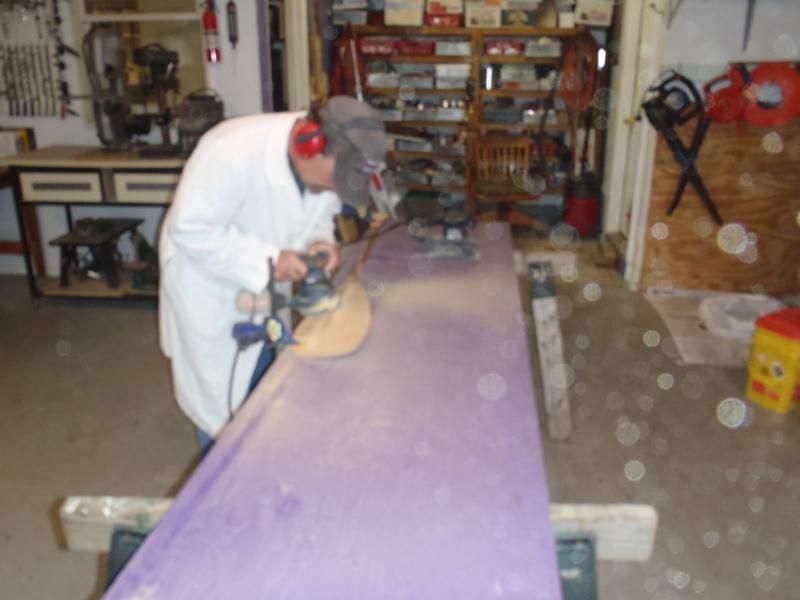
Laying on the carbon fiber tow edging is a pain, or at least a painstaking process. Paint a bead of G/flex on the paddle edge, lay on the tow, another bead of G/flex on top and smooth everything out with a tiny paintbrush. That carbon fiber tow and G/flex trim is as tough as anything that can wrap a paddle edge and once sanded and varnished it looks sharp.

Those sticks are ready for a final sanding and varnish/oil.
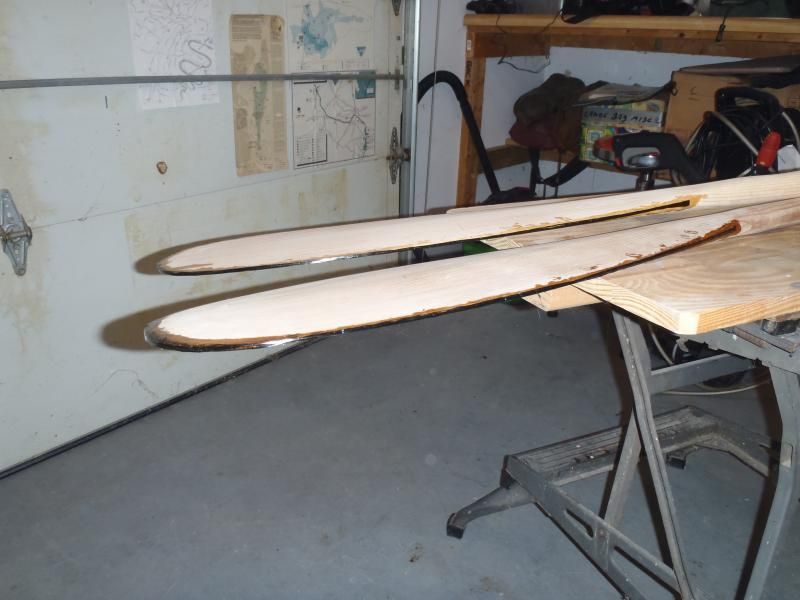
With the old school sticks nearly done we turned modern. Joel’s carbon Camano has many thousands of miles on it and needed some attention even before a car backed over the female ferrule.
Some clamping, finagling and G/flex in the cracks brought the crushed ferrule back to shape and two wraps with one inch 4oz glass tape and G/flex held it there. With the epoxy and cloth set that ends seems as sound as ever, but putting the ferrules together revealed a bit of wobble, some of which had been there before the car crushing. Thousands of miles of use as a guide’s stick will do that.
We had a shop debate about how, or even if, we should fix that. After some “Let’s try” and “Let’s not” debate we elected to try painting a coat of epoxy around the male ferrule end, keeping it as thin and even as possible all the way around, figuring that if it came out too tight some cautious wet sanding might be needed.
No sanding needed. That ferrule is as tight and wobble free as new.
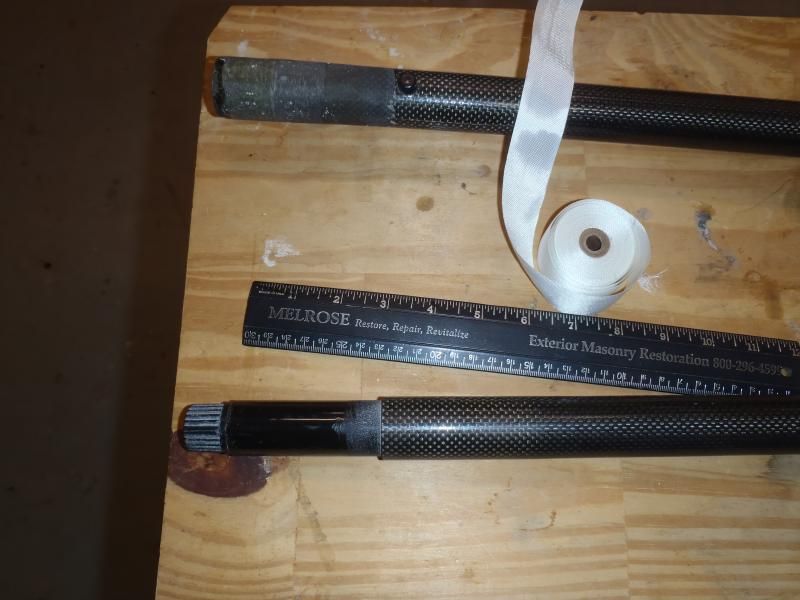
A coat of varnish to give the repair some UV protection and that paddle is good for another 10,000 miles.
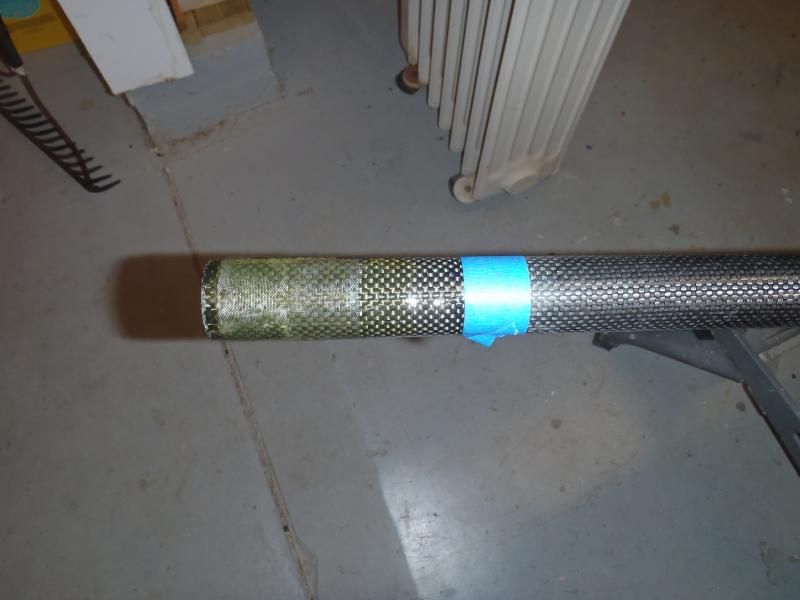
Joel’s brothers immediately declared those four memory sticks to be family heirlooms, so the last two need to be at least as fine.
Per our usual shop strategy I did nothing except hand Joel the tools he needed and put away what he was done with.

Sometimes my eyes go funny when Joel is making dust.

Laying on the carbon fiber tow edging is a pain, or at least a painstaking process. Paint a bead of G/flex on the paddle edge, lay on the tow, another bead of G/flex on top and smooth everything out with a tiny paintbrush. That carbon fiber tow and G/flex trim is as tough as anything that can wrap a paddle edge and once sanded and varnished it looks sharp.

Those sticks are ready for a final sanding and varnish/oil.

With the old school sticks nearly done we turned modern. Joel’s carbon Camano has many thousands of miles on it and needed some attention even before a car backed over the female ferrule.
Some clamping, finagling and G/flex in the cracks brought the crushed ferrule back to shape and two wraps with one inch 4oz glass tape and G/flex held it there. With the epoxy and cloth set that ends seems as sound as ever, but putting the ferrules together revealed a bit of wobble, some of which had been there before the car crushing. Thousands of miles of use as a guide’s stick will do that.
We had a shop debate about how, or even if, we should fix that. After some “Let’s try” and “Let’s not” debate we elected to try painting a coat of epoxy around the male ferrule end, keeping it as thin and even as possible all the way around, figuring that if it came out too tight some cautious wet sanding might be needed.
No sanding needed. That ferrule is as tight and wobble free as new.

A coat of varnish to give the repair some UV protection and that paddle is good for another 10,000 miles.



